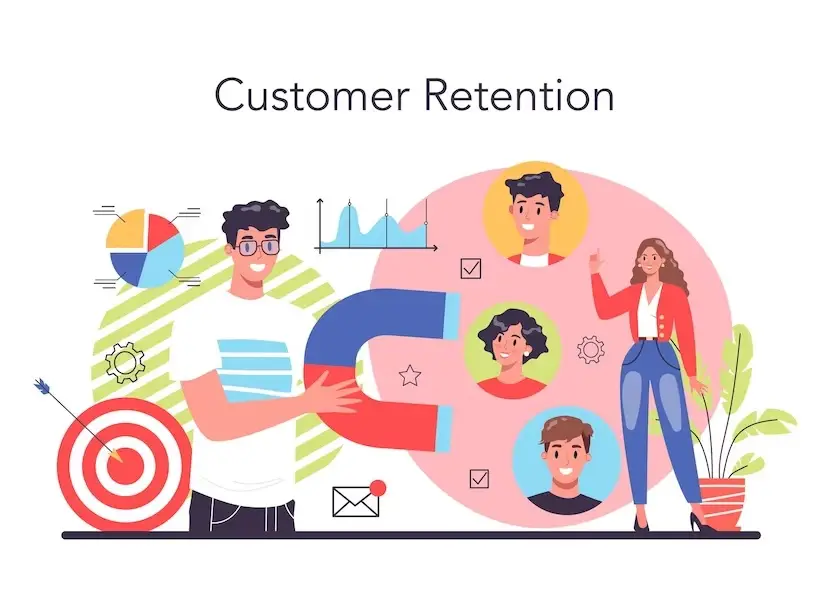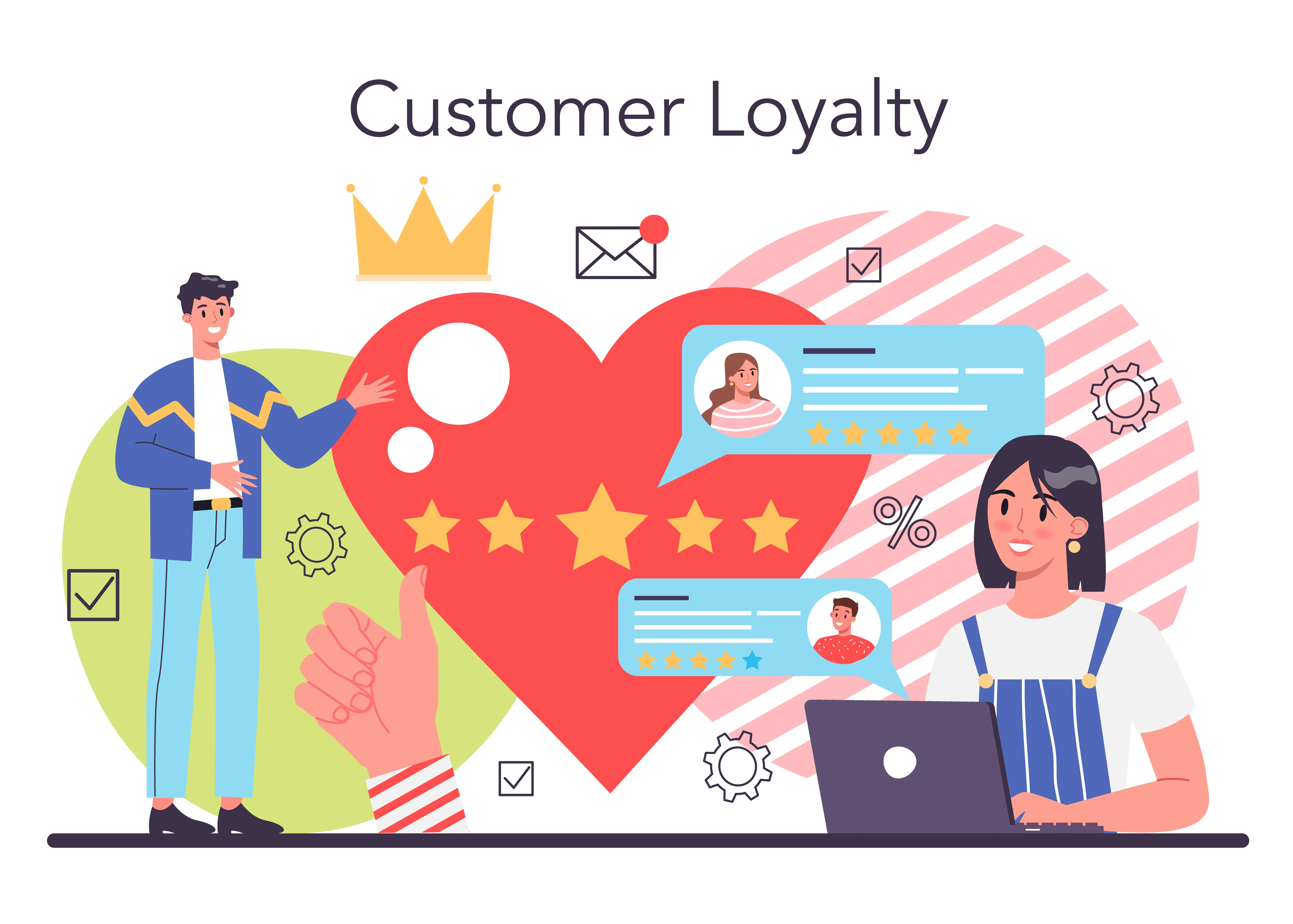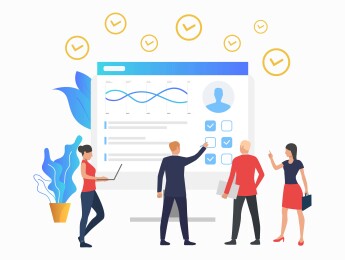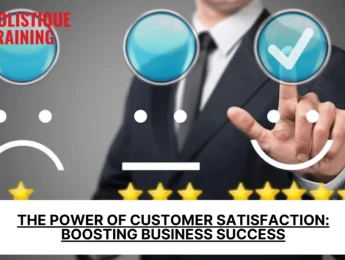The Crucial Role of Customer Satisfaction in Business Success
How Can You Define and Set Objectives for Customer Satisfaction?
What Are the Key Metrics for Measuring Customer Satisfaction?
What Role Does Net Promoter Score (NPS) Play in Understanding Customer Loyalty?
What Are the Challenges in Measuring Customer Satisfaction and How to Overcome Them?
How to Integrate Customer Satisfaction Measurement into Business Strategy?
Introduction
Integrating customer satisfaction measurement into a business strategy involves aligning customer-centric objectives with overall business goals, embedding customer feedback into all organizational levels, and leveraging data to make informed decisions. Establish clear satisfaction targets, incorporate customer satisfaction metrics into key performance indicators, and foster a culture that values customer feedback. Utilize analytics tools to understand customer behavior and preferences, ensuring a seamless experience across all channels. Regularly adapt strategies based on market changes and customer feedback, driving continuous improvement and innovation in products, services, and customer experiences. This holistic approach ensures customer satisfaction is a core component of strategic planning and operational execution, leading to enhanced customer loyalty, competitive differentiation, and business growth.
The Crucial Role of Customer Satisfaction in Business Success
Customer satisfaction refers to the measurement of how a company's products or services meet or surpass customer expectations. It is a key indicator of consumer purchase intentions and loyalty, serving as a distinguishing factor in today's competitive marketplace. Understanding and measuring customer satisfaction helps businesses not only retain loyal customers but also attract new ones through positive word-of-mouth. Here's why customer satisfaction is paramount:
1. Indicator of Repurchase Intentions
Customer satisfaction is directly linked to loyalty and repeat purchases. Satisfied customers are more likely to continue using a brand's products or services and are less sensitive to price changes by competitors. This loyalty is critical for sustaining revenue and achieving long-term business success.
2. Word-of-Mouth Marketing
Happy customers are the best brand ambassadors. They tend to share positive experiences with friends, family, and social networks, which can significantly influence others' buying decisions. Positive word-of-mouth acts as a powerful marketing tool, helping to improve a brand's reputation and attract new customers without incurring the costs associated with traditional advertising.
3. Competitive Advantage
In industries where products and services are similar, customer satisfaction can be a key differentiator. Companies that excel in satisfying their customers can set themselves apart from competitors, creating a unique selling proposition that is difficult to replicate.
4. Reduction of Customer Churn
Customer churn, or the rate at which customers stop doing business with an entity, can be costly. Acquiring new customers is often more expensive than retaining existing ones. By focusing on customer satisfaction, businesses can reduce churn rates, maintaining a stable customer base and ensuring steady revenue.
5. Higher Customer Lifetime Value (CLV)
Customer satisfaction contributes to a higher customer lifetime value, the total worth to a business of a customer over the whole period of their relationship. Satisfied customers are more likely to make repeat purchases and try other products or services offered by the brand, increasing their overall value to the company.
6. Feedback Loop for Continuous Improvement
Measuring customer satisfaction provides valuable feedback that companies can use to improve their products, services, and overall customer experience. This continuous loop of feedback and improvement helps businesses stay aligned with customer needs and expectations, fostering innovation and adaptability.
7. Increased Revenue and Market Share
There's a strong correlation between customer satisfaction and business performance. Satisfied customers contribute to increased sales, both through repeat business and new customer acquisition via referrals. High levels of customer satisfaction can also lead to increased market share as the business gains a reputation for excellence.
8. Employee Satisfaction and Retention
The link between customer satisfaction and employee satisfaction cannot be overstated. Employees take pride in working for companies that are appreciated by their customers, which can lead to higher employee morale, better performance, and lower turnover rates.

How Can You Define and Set Objectives for Customer Satisfaction?
Defining and setting objectives for customer satisfaction is a strategic process that enables businesses to tailor their products, services, and interactions to meet or exceed customer expectations. This process involves several key steps, each designed to ensure that customer satisfaction becomes an integral part of a company's culture and operational strategy. Here's how businesses can define and set objectives for customer satisfaction:
1. Understand Your Customers
Begin by gaining a deep understanding of your customers, including their needs, preferences, and pain points. Use market research, customer feedback, and data analytics to segment your customer base and identify what satisfaction means to different customer groups. Understanding your customers allows you to set more relevant and attainable satisfaction objectives.
2. Benchmark Current Satisfaction Levels
Assess your current level of customer satisfaction through surveys, feedback forms, and direct customer interactions. Tools like Net Promoter Score (NPS), Customer Satisfaction Score (CSAT), and Customer Effort Score (CES) can provide quantifiable benchmarks. Analyzing these benchmarks helps identify areas of strength and areas needing improvement.
3. Establish Clear and Measurable Objectives
Based on your understanding of customer expectations and current satisfaction levels, set clear and measurable objectives. These objectives should be SMART: Specific, Measurable, Achievable, Relevant, and Time-bound. Examples include improving your NPS by a certain percentage within a year or achieving a specific CSAT score in a particular service area.
4. Align Objectives with Business Goals
Ensure that your customer satisfaction objectives align with your overall business goals. Whether it's increasing customer retention, enhancing brand reputation, or driving sales growth, your satisfaction objectives should directly contribute to these broader goals, creating a cohesive strategy across the organization.
5. Develop Strategies to Achieve Objectives
With clear objectives in place, develop targeted strategies and actions to achieve them. This may involve training staff on customer service excellence, refining your product or service offerings, implementing customer feedback loops, or enhancing your customer support channels.
6. Incorporate Feedback Mechanisms
Integrate continuous feedback mechanisms to monitor progress towards your satisfaction objectives. Regularly surveying customers, monitoring social media, and tracking online reviews are effective ways to gather insights and adjust your strategies as needed.
7. Communicate Objectives and Progress
Communicate your customer satisfaction objectives and progress towards these goals across your organization. Keeping everyone informed and engaged ensures that customer satisfaction remains a shared responsibility and a central focus of your business operations.
8. Review and Adjust Regularly
Customer expectations and market conditions can change rapidly. Regularly review your customer satisfaction objectives and the effectiveness of your strategies. Be prepared to make adjustments to stay aligned with customer needs and maintain a competitive edge.
By carefully defining and setting objectives for customer satisfaction, businesses can create a customer-centric culture that not only meets but exceeds customer expectations, leading to increased loyalty, positive word-of-mouth, and ultimately, business success.
What Are the Key Metrics for Measuring Customer Satisfaction?
Measuring customer satisfaction is crucial for businesses aiming to understand and improve the customer experience. Several key metrics can provide valuable insights into customer sentiments and loyalty. By tracking these metrics, businesses can identify areas for improvement, enhance customer service, and ultimately drive growth. Here are the key metrics for measuring customer satisfaction:
1. Net Promoter Score (NPS)
Net Promoter Score measures the likelihood of customers to recommend a company's products or services to others. It's calculated based on responses to a single question: "On a scale of 0-10, how likely are you to recommend us to a friend or colleague?" Respondents are categorized into Promoters (score 9-10), Passives (score 7-8), and Detractors (score 0-6). The NPS is then calculated by subtracting the percentage of Detractors from the percentage of Promoters.
2. Customer Satisfaction Score (CSAT)
The Customer Satisfaction Score gauges customers' satisfaction with a specific transaction or interaction with the company. It usually involves a question like, "How satisfied were you with your experience?" with a rating scale typically ranging from "Very Unsatisfied" to "Very Satisfied." The CSAT score is calculated by averaging the responses, providing a snapshot of customer satisfaction at a particular point in time.
3. Customer Effort Score (CES)
Customer Effort Score measures the ease with which customers can get their issues resolved or tasks completed when interacting with a company. The CES question may be phrased as "On a scale of 'Very Easy' to 'Very Difficult', how easy was it to deal with our company?" A lower effort score indicates a smoother customer experience, which can lead to higher satisfaction and loyalty.
4. First Contact Resolution (FCR)
First Contact Resolution tracks the percentage of customer inquiries or problems resolved in the first interaction with the company. High FCR rates often correlate with high customer satisfaction, as customers appreciate quick and effective solutions to their issues without the need for follow-up.
5. Average Resolution Time
This metric measures the average time taken to resolve customer issues from the moment they are reported. Shorter resolution times can significantly enhance customer satisfaction, as customers value prompt responses and solutions to their problems.
6. Social Media Sentiment Analysis
Social media sentiment analysis involves monitoring and analyzing mentions of your brand on social media platforms to gauge public sentiment. It can provide insights into overall customer satisfaction, areas of concern, and opportunities for improvement based on real-time feedback.
7. Customer Churn Rate
The customer churn rate measures the percentage of customers who stop doing business with a company over a specific period. While it's primarily a metric of customer retention, a high churn rate can also indicate underlying issues with customer satisfaction.
8. Customer Lifetime Value (CLV)
Customer Lifetime Value represents the total revenue a business can expect from a single customer account throughout the business relationship. Higher CLV can indicate higher satisfaction and loyalty, as satisfied customers are likely to make repeated purchases and maintain a longer relationship with the brand.
9. Retention Rate
The retention rate measures the percentage of customers a company retains over a specific period. Like CLV, a high retention rate can be a strong indicator of customer satisfaction, as satisfied customers are more likely to stay loyal to a brand.
By effectively measuring and analyzing these metrics, businesses can gain a comprehensive view of customer satisfaction, allowing them to make informed decisions, foster positive customer relationships, and drive business success.
What Role Does Net Promoter Score (NPS) Play in Understanding Customer Loyalty?
To effectively measure and enhance customer satisfaction, incorporating customer feedback loops into your operational strategy is crucial. These loops facilitate a dynamic process of gathering, analyzing, and acting on customer insights, enabling continuous improvement and personalization of products, services, and overall customer experience. Here's how they work to boost satisfaction levels:
- Gather Feedback Across Touchpoints: Collect customer feedback through various channels—surveys, social media, customer service interactions, and in-product feedback mechanisms—to ensure a comprehensive understanding of the customer experience.
- Analyze and Act on Feedback: Use analytical tools to identify patterns, trends, and areas of improvement from the feedback collected. This analysis should inform actionable strategies to address customer pain points and enhance their satisfaction.
- Close the Loop with Customers: Follow up with customers who provided feedback, informing them of the actions taken in response. This not only shows customers that their input is valued but also demonstrates your commitment to improving their experience.
- Foster a Culture of Continuous Improvement: Embed feedback loops into your company culture, encouraging ongoing innovation and responsiveness to customer needs. This approach ensures your business remains agile and customer-centric.
- Personalize Customer Interactions: Leverage feedback to tailor interactions and experiences to meet individual customer preferences and expectations, enhancing satisfaction and loyalty.
- Build Trust Through Transparency: Be open about the feedback process and how customer insights are used to drive improvements. Transparency builds trust and
- reinforces the value you place on customer opinions.
By implementing structured customer feedback loops, businesses can significantly enhance satisfaction levels, fostering loyalty, reducing churn, and ultimately driving growth. This proactive approach to customer engagement not only addresses current issues but also anticipates future needs, ensuring a consistently high-quality customer experience.
What Are the Challenges in Measuring Customer Satisfaction and How to Overcome Them?
Measuring customer satisfaction comes with several challenges that can impact the accuracy and effectiveness of the insights gathered. However, by understanding these challenges and implementing strategies to overcome them, businesses can ensure a more accurate and holistic understanding of customer satisfaction. Here are some common challenges and strategies to overcome them:
1. Biased Responses
Challenge: Customers may provide feedback that is overly positive or negative due to specific experiences, leading to skewed data.
Solution: Ensure anonymity and confidentiality in surveys to encourage honesty. Use a mix of qualitative and quantitative questions to gather a balanced view.
2. Survey Fatigue
Challenge: Customers often experience survey fatigue, leading to low response rates or hurried responses that may not accurately reflect their satisfaction.
Solution: Keep surveys short and engaging. Offer incentives for completing surveys and ensure that the timing between surveys is reasonable.
3. Interpreting Feedback Correctly
Challenge: Misinterpretation of customer feedback can lead to incorrect conclusions about satisfaction levels.
Solution: Employ experienced analysts to interpret data and consider using advanced analytics tools that can accurately analyze sentiment and thematic concerns.
4. Integrating Multi-Channel Feedback
Challenge: Customers interact with brands across multiple channels, making it challenging to integrate and analyze feedback cohesively.
Solution: Use a Customer Relationship Management (CRM) system or feedback management tool that can aggregate data from various channels for a unified analysis.
5. Measuring Emotional Satisfaction
Challenge: Traditional satisfaction metrics may not fully capture the emotional and psychological aspects of customer satisfaction.
Solution: Incorporate tools like Net Promoter Score (NPS), Customer Effort Score (CES), and emotional analytics to measure satisfaction more comprehensively.
6. Acting on Feedback
Challenge: Collecting feedback is one thing, but acting on it in a timely and effective manner can be challenging, especially for larger organizations.
Solution: Develop a structured process for prioritizing feedback, making improvements, and communicating changes back to customers. Assign ownership within the organization for various aspects of customer feedback.
7. Aligning Internal Perceptions
Challenge: There can be a gap between how a business perceives its performance and actual customer satisfaction.
Solution: Regularly share customer feedback with all levels of the organization to align internal perceptions with customer experiences.
8. Keeping Up with Expectations
Challenge: Customer expectations are continuously evolving, and what satisfies customers today may not satisfy them tomorrow.
Solution: Implement ongoing, dynamic feedback mechanisms that can quickly identify shifts in customer expectations. Stay informed about industry trends and innovations that can influence customer preferences.
9. Data Privacy Concerns
Challenge: With increasing data privacy regulations, customers may be reluctant to share personal information or feedback.
Solution: Clearly communicate how customer data and feedback will be used and ensure compliance with data protection regulations to build trust.
10. Quantifying Qualitative Feedback
Challenge: Qualitative feedback can provide rich insights but is difficult to quantify and analyze systematically.
Solution: Utilize natural language processing (NLP) tools and sentiment analysis to categorize, quantify, and derive insights from qualitative feedback.
Table 1: Strategies to Overcome Customer Satisfaction Measurement Challenges
Challenge | Solution |
Biased Responses | Ensure anonymity in surveys and use a balanced mix of qualitative and quantitative questions. |
Survey Fatigue | Keep surveys engaging and short, offer incentives, and space out survey timing. |
Interpreting Feedback Correctly | Employ experienced analysts and use advanced tools for accurate sentiment analysis. |
Integrating Multi-Channel Feedback | Use CRM systems or feedback management tools for unified analysis. |
Measuring Emotional Satisfaction | Incorporate NPS, CES, and emotional analytics for comprehensive measurement. |
Acting on Feedback | Develop structured processes for feedback prioritization and implement changes. |
Aligning Internal Perceptions | Regularly share customer feedback across all organization levels. |
Keeping Up with Expectations | Use dynamic feedback mechanisms and stay updated on industry trends. |
Data Privacy Concerns | Clearly communicate data usage and ensure compliance with regulations. |
Quantifying Qualitative Feedback | Employ NLP and sentiment analysis for categorization and insights. |
How to Integrate Customer Satisfaction Measurement into Business Strategy?
Integrating customer satisfaction measurement into business strategy is essential for aligning organizational objectives with customer expectations and enhancing overall performance. Here’s a comprehensive approach to embedding customer satisfaction deeply within your business strategy:
1. Set Clear Customer Satisfaction Objectives
- Align with Business Goals: Ensure customer satisfaction objectives complement broader business goals, such as increasing market share, enhancing brand reputation, or driving growth.
- Specific Targets: Establish clear, measurable targets for customer satisfaction, using metrics such as Net Promoter Score (NPS), Customer Satisfaction Score (CSAT), or Customer Effort Score (CES).
2. Embed Customer Metrics into Performance Indicators
- KPI Integration: Incorporate customer satisfaction metrics into key performance indicators (KPIs) for the organization. This emphasizes the importance of customer satisfaction at all levels of the business.
- Departmental Goals: Set specific customer satisfaction goals for different departments, ensuring all areas of the business contribute to enhancing customer experiences.
3. Foster a Customer-Centric Culture
- Employee Engagement: Engage employees in understanding the value of customer satisfaction and their role in achieving it. Regular training and communication can help embed a customer-centric mindset.
- Recognition and Rewards: Implement recognition and reward systems for employees who demonstrate excellence in customer service or contribute significantly to improving customer satisfaction.
4. Utilize Customer Feedback Loops
- Continuous Feedback: Establish mechanisms for continuous collection of customer feedback across various touchpoints. This could involve surveys, feedback forms, social media monitoring, and customer interviews.
- Actionable Insights: Analyze feedback to identify trends, opportunities for improvement, and customer needs. Ensure insights are shared across the organization and used to inform strategic decisions.
5. Make Data-Driven Decisions
- Analytics Tools: Leverage advanced analytics tools and CRM systems to analyze customer data and feedback comprehensively. This helps in understanding customer behavior, preferences, and satisfaction levels.
- Iterative Improvements: Use insights from data to make informed decisions about product improvements, service enhancements, or changes in business processes. Adopt an iterative approach to implementing changes and measuring their impact on customer satisfaction.
6. Integrate Across Channels
- Omnichannel Strategy: Ensure a seamless and consistent customer experience across all channels, including online, in-store, and customer service. Align strategies across channels to maintain consistency in customer satisfaction efforts.
- Channel-Specific Metrics: Monitor and measure customer satisfaction metrics specific to each channel, and tailor strategies to address channel-specific challenges and opportunities.
7. Monitor and Adapt to Market Changes
- Competitive Benchmarking: Regularly benchmark your customer satisfaction levels against competitors and industry standards to identify areas for improvement and differentiation.
- Trend Analysis: Stay informed about industry trends, customer preferences, and technological advancements. Adapt your customer satisfaction strategies to remain relevant and responsive to market changes.
8. Align Customer Satisfaction with Innovation
- Customer-Driven Innovation: Use customer feedback and satisfaction data to drive innovation in products, services, and customer experiences. Involve customers in co-creation processes or innovation workshops.
- Test and Learn: Implement a test-and-learn approach for new initiatives, measuring their impact on customer satisfaction and iterating based on feedback.
Conclusion
In conclusion, customer satisfaction is an essential pillar for business success in today's competitive landscape. By effectively measuring and integrating customer satisfaction into the business strategy, organizations can not only enhance their customer experiences but also achieve significant growth and sustainability. Key metrics like Net Promoter Score (NPS) and Customer Satisfaction Score (CSAT), along with a customer-centric culture and strategic use of customer feedback, enable businesses to stay aligned with customer expectations. Overcoming challenges in measurement and leveraging digital tools further empower businesses to refine their offerings and strategies continuously. Ultimately, prioritizing customer satisfaction leads to increased loyalty, positive word-of-mouth, and a strong competitive edge.
Frequently Asked Questions(FAQ)
What are some common challenges in measuring customer satisfaction?
Challenges include biased responses, survey fatigue, interpreting feedback correctly, integrating multi-channel feedback, measuring emotional satisfaction, acting on feedback, aligning internal perceptions, and keeping up with evolving customer expectations.
How can businesses overcome challenges in measuring customer satisfaction?
Businesses can overcome these challenges by ensuring survey anonymity, keeping surveys short and engaging, employing experienced analysts, using a CRM for unified feedback analysis, incorporating emotional analytics, developing structured feedback processes, sharing customer feedback across the organization, and staying informed about industry trends.
How Can Businesses Act on Customer Satisfaction Insights to Drive Improvement?
To leverage customer satisfaction insights effectively, businesses should first analyze feedback to identify key trends, pain points, and areas where they excel. Based on this analysis, they need to prioritize actionable steps that have the potential to significantly enhance customer satisfaction. Implementing these changes in products, services, or overall customer experience is crucial, as is communicating these improvements back to customers to demonstrate responsiveness and build trust. Finally, it's essential to continuously monitor the impact of these changes on customer satisfaction levels, making further adjustments as necessary to ensure ongoing improvement and maintain a positive trajectory in customer relations.
How to Use Surveys Effectively to Measure Customer Satisfaction?
To use surveys effectively for measuring customer satisfaction, businesses should design concise and focused questionnaires that directly address key aspects of the customer experience. Including a mix of quantitative questions, such as rating scales, and qualitative questions for open-ended feedback, allows for a comprehensive understanding of customer sentiments. Timing the survey appropriately after an interaction or purchase ensures more accurate and relevant responses. Employing a variety of distribution methods, such as email, social media, or in-app prompts, can improve response rates. It's also crucial to analyze the collected data systematically to identify trends, insights, and areas for improvement, and then act on these findings to enhance customer satisfaction levels continuously.






















